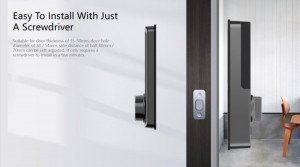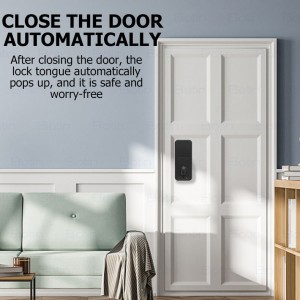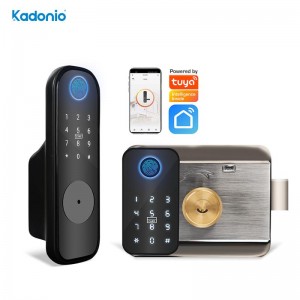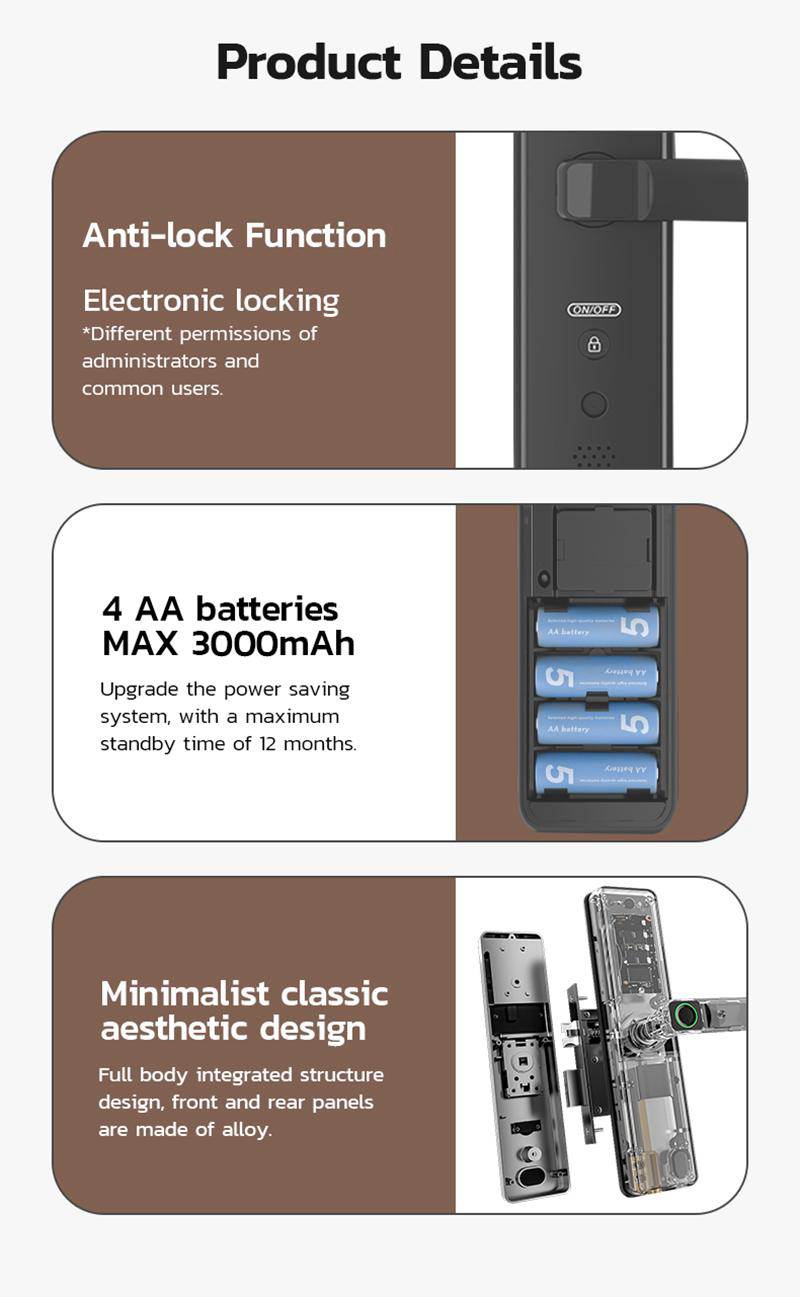In order to improve the aesthetics of home entrances and enhance residential security, smart door locks are attracting more and more attention and are entering more homes. Currently, only a small number of new homes are equipped with smart door locks for owners, while owners undergoing home renovations can choose to purchase and install these devices directly.
However, driven by cost-effectiveness, the most common demand is to retrofit smart locks on existing security doors to replace outdated mechanical locks. From a rational perspective, if you’re considering upgrading your smart lock over the Christmas period, it’s crucial to focus on two key factors and choose based on your budget.
1. Door material
The installation of smart door locks will cause a certain degree of damage to the original door structure. The existing door lock needs to be partially dismantled, the door cut to a certain extent, and then the smart lock is installed and fixed. Therefore, the installation of smart door locks has specific requirements for the thickness and material of the door.
Typically, standard smart locks can be installed on security doors with a thickness of 40 to 90 mm. For older security doors with thin panels (such as those made of thin wood, wrought iron or glass), forcing a smart lock to install may run the risk of the door breaking. When purchasing, you must communicate with the seller and installation professionals in advance to avoid finding that the lock cannot be installed after purchase.
Additionally, with high-cost door materials such as double doors (mother and sub-doors), careful consideration is needed during installation as modifications (such as door edge removal) may be irreversible.

2. Type of lock
The type of older mechanical locks may also limit the installation of smart door locks. External locks, represented by latch locks and external door locks, are installed on the outside of the door. They cannot accommodate the lock body, nor can they fix the smart lock handle, and are not compatible with the replacement of the smart lock.
A narrow door gap that triggers the latch assembly to lock the door may cause the smart lock to prevent the door from closing. In addition, this type of lock has a unique structure and complex door body composition, making it not suitable for smart lock modification.
3. Battery slot design
Smart door locks usually run on batteries. Therefore, when considering a smart lock upgrade, you must pay attention to whether the lock has a suitable battery slot design. Some older security doors may not take into account the need to replace the battery, making the installation of smart door locks complicated or impractical.
When choosing a smart door lock, it is recommended to choose a product with a well-designed battery slot to ensure that battery replacement is convenient without affecting the normal use of the lock. Some advanced smart door locks even utilize low-power technology to extend battery life and reduce replacement frequency.
4. Connection options
Smart door locks usually support Bluetooth, Wi-Fi or other wireless connection methods, and can be remotely controlled through smartphones or other smart devices. When choosing a smart door lock, you must ensure that the connectivity of the selected product is consistent with your home network environment. Older security doors may not have smart device connectivity requirements in mind, so it’s worth confirming that the smart lock’s connectivity will fit into your existing home network setup before purchasing.
To sum up, upgrading your smart door lock is a great option to enhance your home’s security and convenience. However, before starting the retrofit process, door materials, lock types, battery slot designs, and connection options must be thoroughly examined to ensure that the right smart door lock is selected and installed smoothly. If in doubt, it is recommended to seek guidance from professional installers or consult the relevant manufacturer.
Post time: Dec-20-2023







